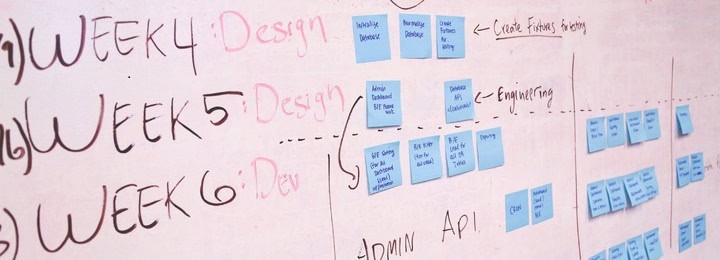You want to optimize your website’s loading times to improve your visitors’ user experience, your SEO and your conversion rates. But how fast can you make your web pages load, and how do you know what budget to devote to it? How many resources do you need, and where do you start: a CDN, reducing JavaScript, CSS and HTML files, or reducing the weight of images?
To improve the user experience, or to boost your SEO, as with any web project, you’ll need to define tasks, estimate their complexity and plan them. Here’s a guide to help you get organized.
Setting goals to optimize website speed
If you want to improve your website’s loading times, start by defining a Performance Budget. These can be thresholds to be reached or not exceeded to guarantee the speed of your web pages. Here are some examples for websites in all sectors:
- reduce Speed Index by 45% and meet SEO challenges like iDGARAGES ;
- not exceed 2 MB for each page, including images and third parties , like Uni-Médias;
- achieve a maximum Speed Index of 1 second, like Rossignol…
The examples are numerous, and the objectives can also evolve over time for even greater challenges, or on the contrary to revise your objectives according to the results of your actions.
They can relate to :
- classic performance metrics (display with Speed Index or Start Render, interactivity with Time To Interactive, server response time with Time To First Byte…) ,
- target performance scores (Webperf score from JDN’s monthly rankings, Google Lighthouse or PageSpeed Insights scores , GTMetrix or Dareboost scores, etc.)
- UX metrics linked to page speed, such as those used by Google to rank search results (Largest Contentful Paint, Cumulative Layout Shift, First Input Delay).
Estimate load to improve loading times
Once you’ve defined your performance objectives, the next step is to define the means of achieving them.
Some techniques are essential (and even fairly basic) for improving your load times so that your site displays quickly in a browser, such as setting up a CDN, a caching strategy , optimizing code to reduce the size and weight of files (CSS, JavaScript, HTML) …
And others will require more advanced expertise, such asoptimizing images, or deploying an intelligent caching system to manage both static and dynamic content on a page.
Obviously, the estimated duration of a task does not mean that it will be accomplished in exactly that time (in concrete terms, an optimization estimated to take the equivalent of 2 days’ work will not be applied 2 days later). Here are a few tips and tools to help you define the time you need to set aside to optimize the speed of your pages.
How to estimate the time and budget needed to speed up a website
In addition to the intrinsic complexity of optimizing your web pages to improve their speed, the infrastructure and organization of your teams will influence the amount of time you need to set aside to accelerate your site.
In practice, the project will be more or less complex depending on whether :
- whether you’re starting from scratch or with a legacy of several years,
- you have a CI (Continuous Integration) or not,
- whether you’re working in a large organization with numerous processes and validation circuits, or with a small, fast-moving team…
Determine the complexity of optimizations to improve your loading times
We’ve tried to define a list of optimizations – some ofwhich can be automated by our engine, with a level of complexity for each.
We’ve provided a grid inspired by the Agile method to help you estimate the overall complexity of your web performanceproject to improve your loading times. The result is an estimate – please don’t hesitate to contact us if you have any suggestions for optimizing this calculation grid.
Save time by automating the optimization of your site’s code
Applying these optimizations page by page or for each file is obviously unthinkable, so you need to automate these actions as much as possible. Also, bear in mind that once your optimizations are in production, you need to maintainthem over time. Each evolution or addition of elements to the site may require new adjustments to the code of your pages to maintain speed.
This was the case for Le Parisien, which, despite a redesign leading to good performance, observed a deterioration in loading times after just 3 months (+25% on First Contentful Paint and First Meaningful Paint).
But.fr also relies on our SaaS solution for optimizing loading times to save time and avoid systematically reworking the code each time the website is updated. Technical teams are thus relieved, and benefit from our CDN service, Brotli compression , and a reinforced security layer, all without having to embark on complex developments, and without continually repeating the same work to achieve satisfactory results. Deployment took place in just 3 weeks, whereas the IT Department had planned a year’s worth of developments.
Automating the optimization of your site’s loading times offers many advantages. It saves both time and resources, especially for tasks that require special expertise due to their complexity.
Indeed, while concatenating CSS or JavaScript files offers few options, image optimization/compression can confront you with numerous alternatives to choose from.
By automating your webperf, optimizations are intelligently linked to each other, your website is faster for a better user experience, better visibility on Google compared to your competitors’ sites (optimized referencing), and therefore better conversion rates… all for lasting results.
Take the test with our grid, and contact us to evaluate
how much time you could save by automating your webperf optimizations!





















